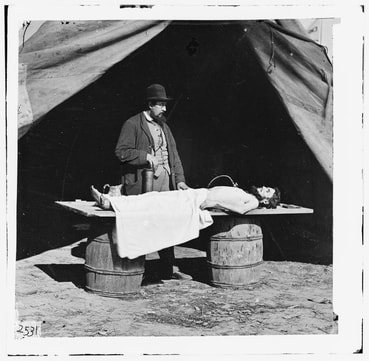|
Em-balm /əmˈbä(l)m/ (verb) 1. to preserve [a corpse] from decay, originally with spices and now usually by arterial injection of a preservative. 2. give a pleasant fragrance to. Embalming rates in the United States have begun to drop, as cremation (and other more economical, eco-friendly alternatives) becomes more popular. But there was a time not all that long ago when embalming was the most popular option for final disposition. In ancient times, specifically in ancient Egypt, embalming came by way of mummification. Priests studied and became skilled at the process of removing the organs of the deceased. These organs would be preserved with certain spices and fragrances and kept in jars, and a salty mineral called natron would be used to dry out the rest of the body. The body was finally wrapped in linens before it was ready for burial. This whole process took 70 days. The ancient Egyptians believed that preserving their loved ones like this would allow their spirits to one day return again to the in-tact body, so that they could live forever. Throughout history, there are other ancient cultures- the Mayans and Aztecs come to mind- that utilized embalming in one way or another. But in the United States, it all started with the Civil War. The Civil War is known as America’s bloodiest conflict. As battles raged on, the body count began to climb to drastic numbers. When soldiers were identified, if possible their remains needed to be sent back to their families for a proper funeral. But it often took days, if not weeks, for the bodies to arrive back home, and by then, decomposition could be severe. The railroads were not willing to transport these bodies, due to odor and fear of disease. For this reason, mass graves were the unfortunate answer to the problem. Enter Thomas Holmes, aka “the father of American embalming.” He was a mortician with a better solution. Before the war, he had studied and experimented with various forms of preservation, and ultimately decided that arterial injection was the best way to preserve the whole body. Arterial injection is the main method used to this day to embalm. Holmes began to produce and sell his own embalming fluid. He was first hired by the Union army to embalm a few soldiers that had been killed in battle, and that were needing to be shipped back to their families. He charged $100 for each case he completed. Embalmer at work during Civil War era. Word of Holmes’ essential work began to spread. President Lincoln himself was aware of the great need for embalming during the war, and so authorized it for the fallen. After the war was officially over, embalming continued to gain popularity as funeral parlors took advantage of the market. By the early 1900s, it had become mainstream in America. Over time, arsenic was replaced by formaldehyde as the preservative of choice.
Embalming is still very common in modern funeral practice. But as more is realized about the carcinogenic effects of formaldehyde, and as cremation, natural burial, alkaline hydrolysis, and other forms of final disposition gain in popularity, it’ll be interesting to see where embalming will be in 10, 15, or 20 years. -Aubrey
1 Comment
I wanted to express my gratitude for your insightful and engaging article. Your writing is clear and easy to follow, and I appreciated the way you presented your ideas in a thoughtful and organized manner. Your analysis was both thought-provoking and well-researched, and I enjoyed the real-life examples you used to illustrate your points. Your article has provided me with a fresh perspective on the subject matter and has inspired me to think more deeply about this topic.
Reply
Leave a Reply. |
Archives
May 2024
Categories
All
|



 RSS Feed
RSS Feed
